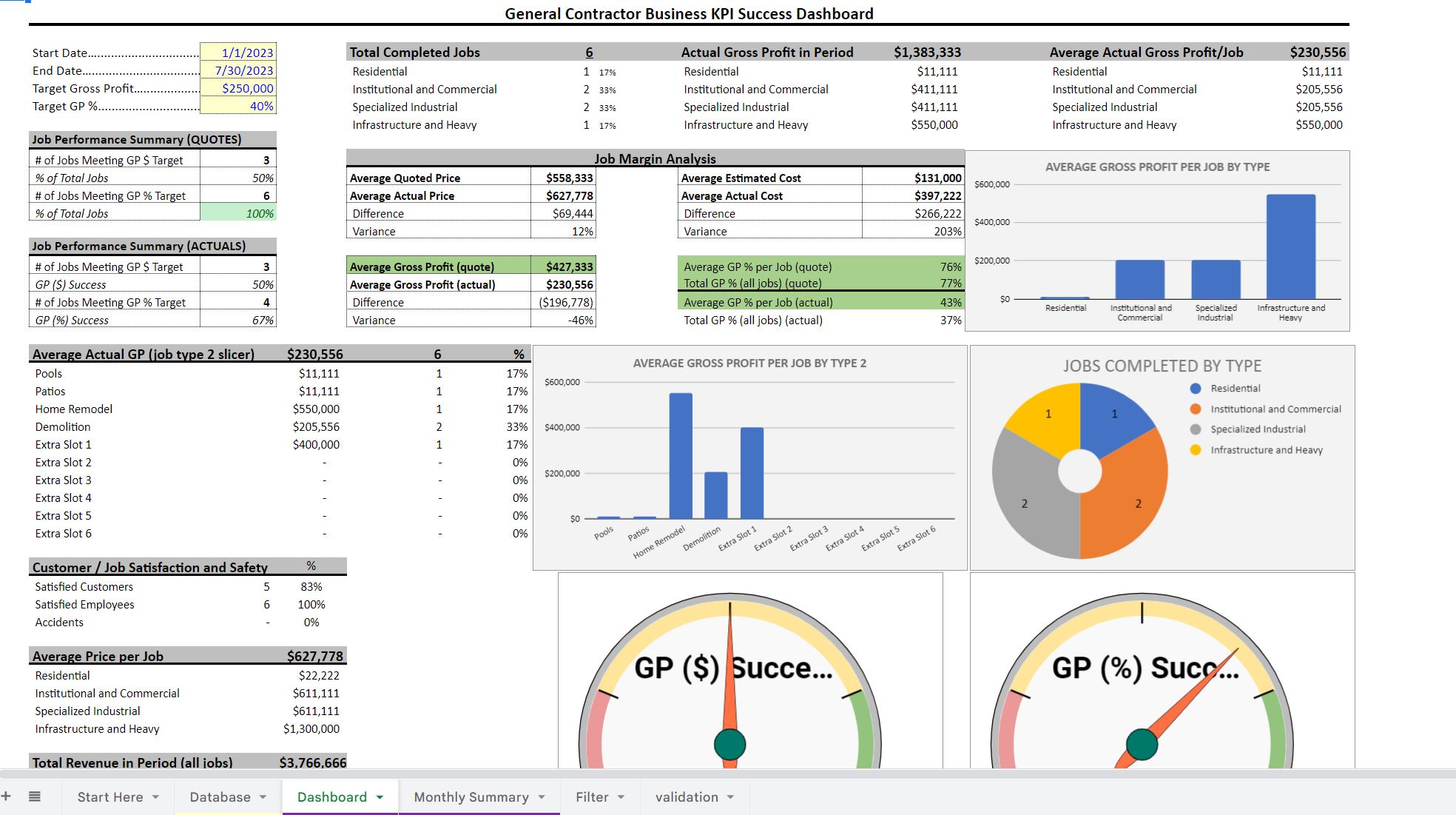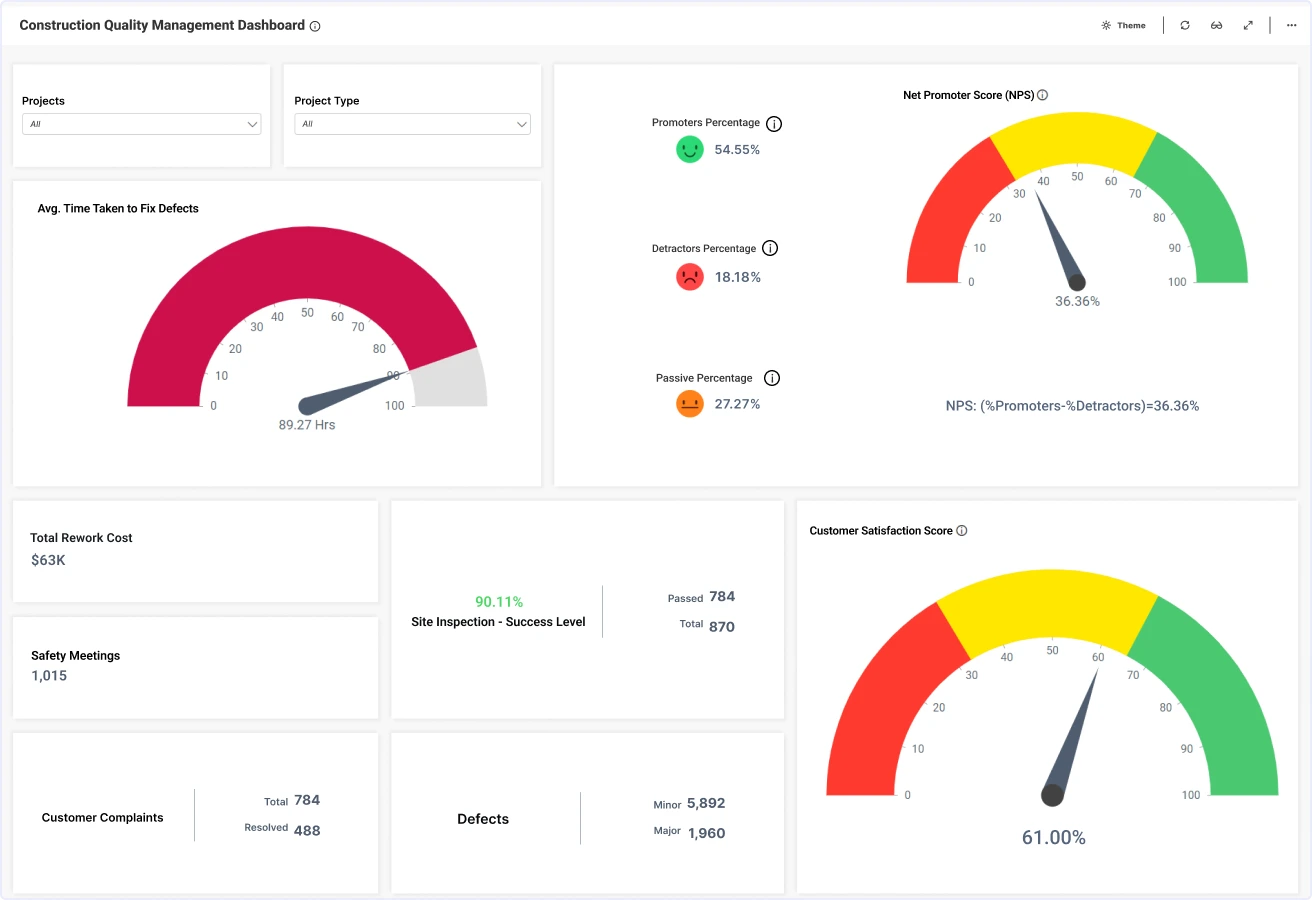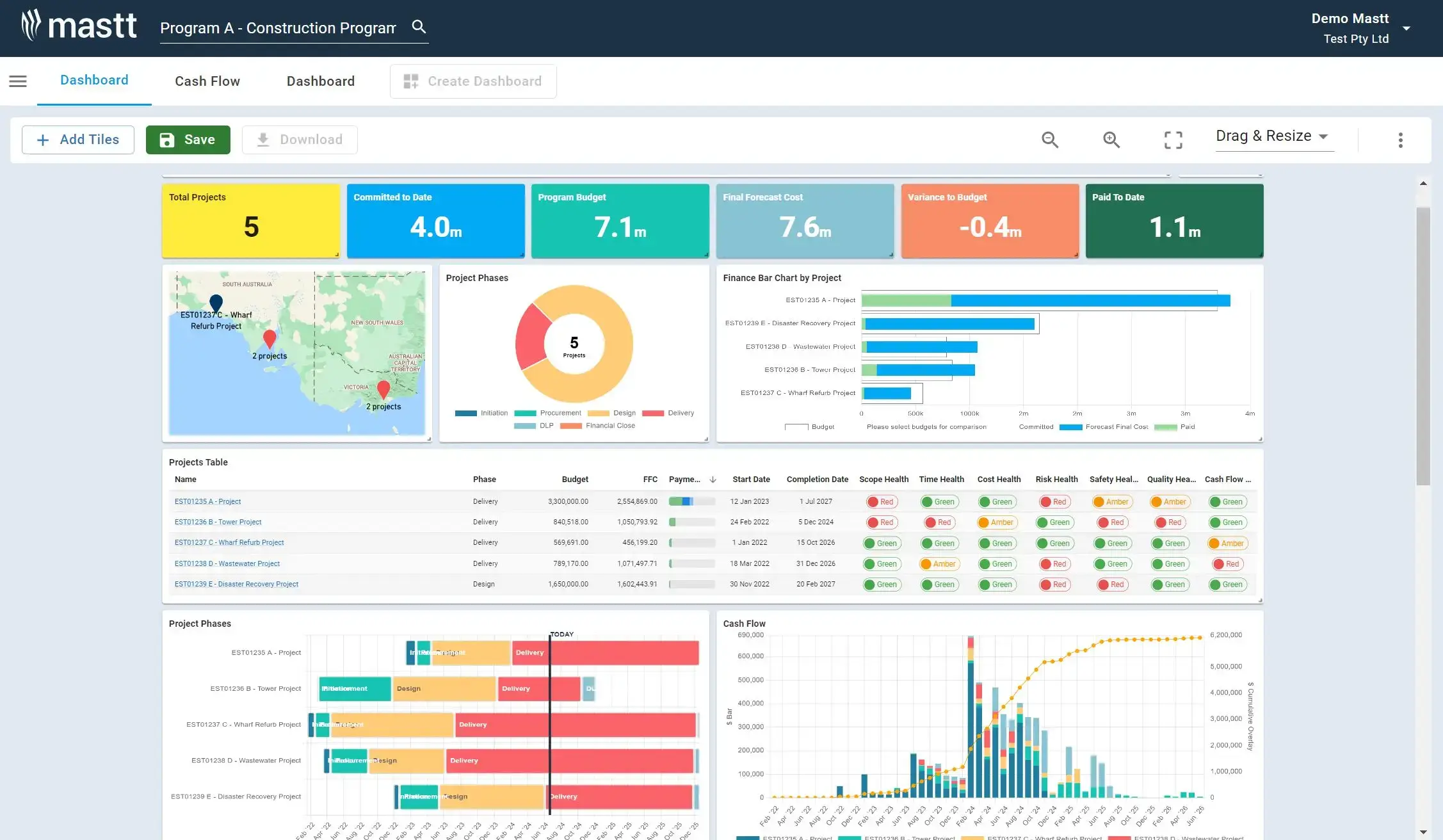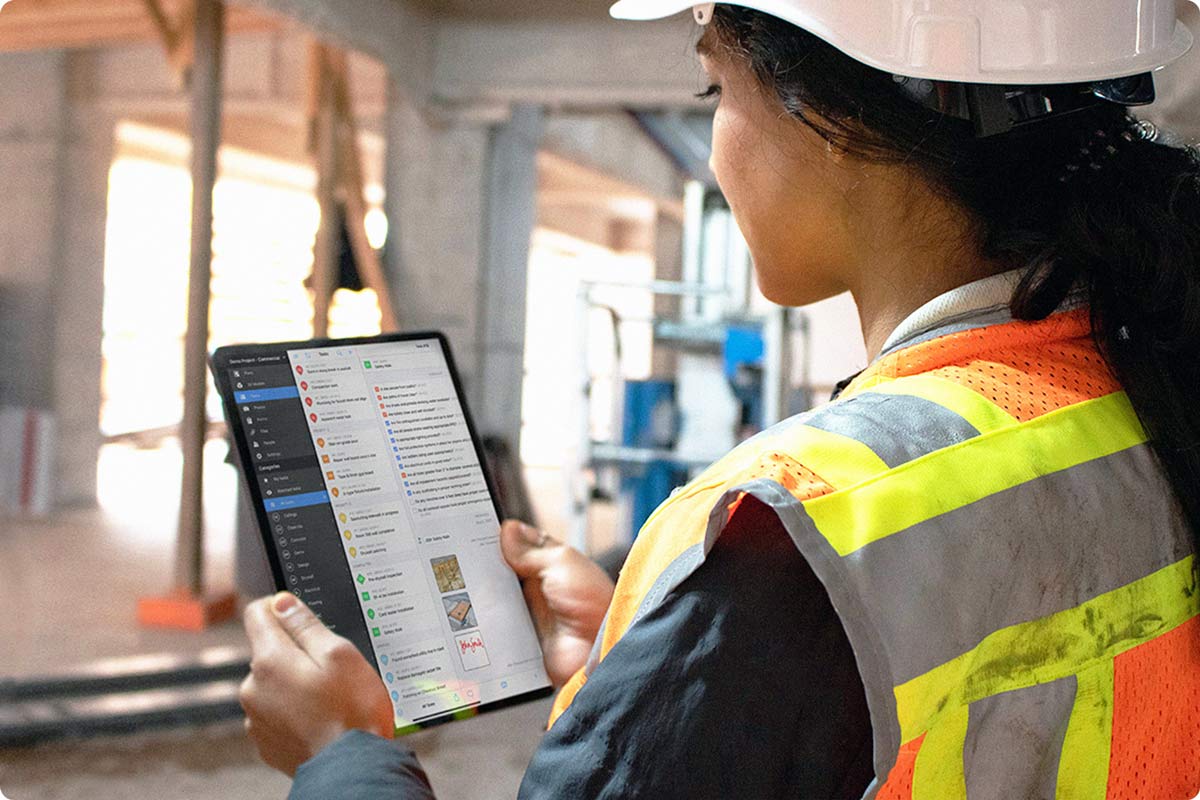Picture this: you're standing on a bustling London building site at half past seven on a Tuesday morning. There's a proper buzz about the place—bricklayers are already three courses up, the sparks are running cables, and your project manager's got that look that says everything's ticking along nicely. But here's the thing: how do you actually know if you're winning or just keeping busy?
That's where construction KPIs come into their own. Think of them as the vital signs for your build—like the gauges on your van's dashboard that tell you whether you're cruising smoothly or about to break down on the M25. They cut through all the noise and turn those vague hopes about staying "on time and on budget" into proper, actionable numbers you can actually work with.
For UK builders, particularly those working across London and the South East, getting a handle on the right metrics isn't just nice to have—it's absolutely essential. With material costs fluctuating, labour shortages biting, and clients expecting more transparency than ever, the firms that survive and thrive are the ones that know their numbers inside out.

Managing a construction project without proper metrics is like trying to navigate the one-way system in central London without a sat nav. You might eventually get where you're going, but you'll waste time, fuel, and probably your sanity in the process. Construction KPIs solve this problem by giving you an unbiased, data-backed snapshot of how your project's performing across all the areas that actually matter.
The UK construction industry has learned this lesson the hard way. According to recent industry analysis, projects that actively track performance indicators are 23% more likely to finish on time and 18% more likely to stay within budget. That's not just a marginal improvement—that's the difference between a profitable job and one that keeps you awake at night.
Every project starts with the same ambitious goals: finish on time, stay on budget, keep everyone safe. Sounds straightforward enough, but these phrases are about as useful as a chocolate teapot when you're trying to manage day-to-day operations. Construction KPIs break down these big ambitions into specific things you can measure, track, and actually influence.
Take financial health, for instance. Instead of hoping you're "doing alright" financially, metrics like your Cost Performance Index tell you in real-time whether you're making or losing money. No more waiting until the final account to discover you've been haemorrhaging cash for weeks.
Similarly, schedule adherence becomes crystal clear through indicators like your Schedule Performance Index. Rather than relying on gut feelings about progress, you get hard data showing whether you're ahead of the game or falling behind. This is particularly crucial in London, where any delays can trigger penalty clauses that'll make your eyes water.
Safety metrics like the Lost Time Injury Frequency Rate give you a clear picture of site safety standards. With HSE inspections becoming increasingly rigorous across UK construction sites, having robust safety KPIs isn't just good practice—it's essential for avoiding the kind of enforcement action that can shut down your project entirely.
When you monitor these indicators consistently, you spot trouble brewing long before it becomes a crisis. A Cost Performance Index that's steadily declining signals cost overruns early enough to investigate material waste or labour inefficiencies before they torpedo your profit margins.
The real value of construction KPIs lies in shifting your entire operation from reactive firefighting to proactive management. Instead of constantly responding to problems after they've already cost you time and money, you're identifying and addressing issues whilst they're still manageable.
This approach transforms team dynamics as well. When everyone—from your site foreman to the client's quantity surveyor—can see the same transparent data, conversations change completely. Instead of finger-pointing and blame games, you get collaborative problem-solving. Trust builds, expensive delays reduce, and everyone pulls in the same direction.
For UK construction firms, this transparency has become increasingly important as clients demand greater visibility into project progress. The days of "trust me, it's all going fine" are long gone. Modern clients, particularly in the commercial sector, expect regular, data-driven updates that demonstrate value for money.
Right, so you're convinced about the value of tracking performance indicators. The next challenge is working out which ones actually matter. It's tempting to measure everything that moves, but that's a recipe for drowning in data whilst missing the signals that really count.
The secret isn't tracking every conceivable metric—it's focusing on the indicators that genuinely drive project success. After working with hundreds of UK construction firms, from small residential builders in Surrey to major contractors working on London's infrastructure projects, certain patterns emerge about which KPIs deliver the most value.

The most effective approach groups your key indicators into several core categories, giving you a balanced view of project health that covers everything from financial performance to team satisfaction. This framework ensures you're not just monitoring one aspect whilst ignoring others that could derail your project.
Here's how the essential categories break down for UK construction projects:
CategoryPrimary FocusKey BenefitTypical Review FrequencyFinancial PerformanceProfitability and cost controlProtects margins and cash flowWeeklySchedule AdherenceTimeline and milestone trackingPrevents delays and penaltiesDailyQuality StandardsWorkmanship and client satisfactionReduces rework and builds reputationPer milestoneSafety ComplianceSite safety and HSE requirementsPrevents incidents and regulatory issuesDailyTeam PerformanceWorkforce stability and productivityMaintains project momentumMonthly
These metrics form the backbone of any successful construction business. They tell you whether you're actually making money or just keeping busy. For UK builders, where margins are often tight and material costs can fluctuate dramatically, financial KPIs provide the early warning system that keeps projects profitable.
Cost Performance Index (CPI) remains the gold standard for tracking financial efficiency. It compares the value of work completed against actual costs incurred. When your CPI drops below 1.0, you're officially spending more than planned—a clear signal that something needs immediate attention. UK construction firms typically aim for a CPI of 1.05 or higher to maintain healthy margins.
Schedule Performance Index (SPI) tracks your progress against the planned timeline. Like its financial counterpart, an SPI below 1.0 indicates you're falling behind schedule. In the UK market, where liquidated damages clauses are standard, maintaining a strong SPI isn't just about efficiency—it's about avoiding potentially crippling penalty payments.
Change Order Percentage measures how much your project scope has shifted from the original plan. High percentages often indicate poor initial planning or scope creep—both of which can devastate profitability. UK contractors typically see change orders on 15-20% of project value as normal, but anything above 25% warrants serious investigation.
Gross Profit Margin shows project profitability before overhead costs. For UK residential projects, healthy margins typically range from 15-25%, whilst commercial projects might see 10-20%. Understanding these benchmarks helps you price competitively whilst maintaining profitability.
Keeping close tabs on these financial indicators isn't optional—it's survival. When you see your CPI and SPI consistently trending downward, it signals fundamental problems that need immediate attention. The firms that catch these trends early are the ones that stay profitable whilst their competitors struggle.
Time is money in construction, but in the UK market, it's often much more than that. With penalty clauses, seasonal weather constraints, and increasingly complex planning requirements, schedule performance can make or break a project's profitability.
Critical Path Performance tracks progress on activities that directly impact your completion date. Any delays here ripple through the entire project, potentially triggering penalty clauses or forcing expensive acceleration measures. UK contractors working on commercial projects often face liquidated damages of £1,000-£5,000 per day for late completion—making critical path monitoring essential.
Milestone Achievement Rate measures how consistently you're hitting key project milestones. This metric is particularly valuable for UK residential projects, where planning conditions often require specific completion dates for different phases. Missing milestones can trigger planning enforcement action or void important approvals.
Resource Utilisation Rate shows how efficiently you're using your workforce and equipment. In a market where skilled labour is increasingly scarce, maximising productivity from your existing team becomes crucial. UK construction firms typically target utilisation rates of 75-85% to balance efficiency with flexibility.
Weather Impact Days might seem obvious, but tracking weather-related delays helps you plan more accurately for future projects. UK construction faces unique challenges from unpredictable weather, and firms that track these impacts can build more realistic schedules and price weather contingencies appropriately.
The key to effective schedule management lies in monitoring these indicators daily rather than waiting for weekly reports. Modern project management platforms can provide real-time updates, allowing you to spot potential delays whilst there's still time to take corrective action.
Quality metrics often get overlooked in favour of time and cost indicators, but they're equally crucial for long-term success. Poor quality work doesn't just cost money in rework—it damages your reputation and makes winning future projects much harder.
Rework Percentage measures how much work needs to be done twice due to defects or errors. Industry benchmarks suggest that rework typically accounts for 5-10% of total project costs, but the best UK contractors keep this below 3%. Every percentage point reduction in rework directly improves your bottom line.
Defect Density tracks the number of defects per unit of work completed. This metric helps identify whether quality issues stem from specific trades, materials, or processes. UK contractors often track defects per £100,000 of work value to enable meaningful comparisons across different project types.
Client Satisfaction Scores provide crucial feedback about your performance from the client's perspective. The UK construction industry has seen significant improvements in client satisfaction over recent years, with scores rising from 63% to 77% for product quality between 2005 and 2017. Maintaining high satisfaction scores is essential for securing repeat business and referrals.
First-Time Pass Rate for inspections shows how often your work passes quality checks without requiring corrections. High pass rates indicate strong quality control processes and reduce the time and cost associated with re-inspections.
Quality KPIs require consistent measurement and honest assessment. The temptation to overlook minor defects or rush through quality checks can be strong when schedules are tight, but the long-term costs of poor quality far outweigh any short-term time savings.

Whilst everyone focuses on costs and schedules, the real foundation of any successful project is the people doing the work. Your workforce represents your most valuable asset, and understanding their performance, stability, and engagement provides crucial insights into your project's long-term health.
The UK construction industry faces particular challenges around workforce management. Skills shortages, an ageing workforce, and increasing competition for talented tradespeople mean that retaining good people has become more critical than ever. Firms that ignore workforce KPIs often find themselves caught in a vicious cycle of high turnover, constant recruitment costs, and declining productivity.
Employee Turnover Rate tracks how many people leave your company or specific projects over a given period. High turnover isn't just an HR headache—it's a direct hit to your project's momentum and profitability. Every skilled tradesperson who walks away takes their expertise with them, whilst replacement costs can easily reach £3,000-£5,000 per position when you factor in recruitment, training, and lost productivity.
UK construction turnover rates peaked at 5.3% in 2015, but the industry has made significant improvements since then. Leading contractors now maintain turnover rates below 3% by focusing on career development, competitive compensation, and positive site culture.
Absenteeism Rate measures unscheduled absences from site. When this rate climbs, it can cripple productivity, delay critical activities, and pile pressure onto remaining team members. High absenteeism often signals deeper issues—poor morale, unsafe working conditions, or inadequate management—that need addressing before they spread.
Training Investment per Employee shows your commitment to workforce development. UK construction firms that invest heavily in training see measurable returns through improved productivity, better quality work, and higher retention rates. The Construction Industry Training Board (CITB) provides various funding schemes that can offset training costs, making this investment even more attractive.
Productivity per Worker measures output relative to labour input. This metric helps identify whether your team is working efficiently or if processes need improvement. UK contractors typically track productivity in terms of value delivered per labour hour, allowing meaningful comparisons across different project types and phases.
Safety Training Compliance ensures your workforce meets HSE requirements and maintains current certifications. With construction accounting for a disproportionate share of workplace injuries, maintaining high training compliance isn't just good practice—it's essential for avoiding HSE enforcement action and protecting your workforce.
Many UK construction firms underestimate the true cost of workforce instability. When a skilled carpenter or electrician leaves mid-project, the impact extends far beyond recruitment costs. Knowledge walks out the door, team dynamics suffer, and productivity often drops whilst new team members get up to speed.
Research from the Construction Industry Training Board shows that firms with stable, well-trained workforces complete projects 15% faster and with 20% fewer defects than those with high turnover. These improvements translate directly into better financial performance and higher client satisfaction.
The most successful UK contractors treat workforce KPIs as seriously as financial metrics. They understand that a stable, skilled, motivated team is the foundation upon which all other success is built. When your people are engaged and committed, everything else—quality, safety, productivity—tends to fall into place naturally.
Having identified the KPIs that matter most to your projects, the next challenge is actually implementing a system to track them effectively. For too long, UK construction has relied on a patchwork of spreadsheets, manual data entry, and weekly reports that are often out of date before they're even distributed.
This traditional approach isn't just inefficient—it's actively harmful to project success. Manual data entry introduces errors, spreadsheets become unwieldy as projects grow, and by the time problems show up in weekly reports, they've often already caused significant damage.
Before diving into technology solutions, you need to establish clear, specific targets for each KPI you plan to track. Vague goals like "improve safety" or "reduce costs" don't provide the clarity needed to drive real improvement. Instead, you need SMART targets—Specific, Measurable, Achievable, Relevant, and Time-bound.
For example, instead of "improve safety," a SMART target might be "achieve zero Lost Time Injuries for the next six months" or "maintain a 100% pass rate on weekly safety inspections throughout the project." This specificity focuses your team's efforts and makes success measurable.
Similarly, financial targets need precision. Rather than "stay on budget," you might target "maintain a Cost Performance Index above 1.05 throughout the project" or "keep change orders below 15% of original contract value." These specific targets give your team clear benchmarks to work towards.
Traditional spreadsheet-based tracking simply can't keep pace with modern construction projects. A platform like BRCKS transforms KPI tracking from a time-consuming administrative burden into a powerful management tool that actually helps you run better projects.

BRCKS automatically pulls data from multiple sources—daily logs, timesheets, financial systems, material deliveries—and consolidates everything into a single, real-time dashboard. This eliminates the manual data entry that causes errors and delays, whilst providing instant visibility into project performance.
The platform's strength lies in its ability to present complex data in an easily digestible format. Instead of wrestling with multiple spreadsheets to understand project status, you get a clear, visual dashboard that highlights the metrics that matter most. When your Cost Performance Index starts declining or safety incidents increase, you see it immediately rather than waiting for next week's report.
Raw data only becomes valuable when it drives better decisions. BRCKS excels at transforming KPI data into actionable insights that help you manage projects more effectively.
Automated Alerts notify you immediately when KPIs drift outside acceptable ranges. If your Cost Performance Index drops below 1.0 or your Schedule Performance Index indicates delays, you receive instant notifications that allow you to investigate and respond before small problems become major crises.
Trend Analysis helps you spot patterns that might not be obvious from individual data points. Perhaps material costs consistently spike on Fridays due to last-minute orders, or productivity drops during certain weather conditions. Identifying these patterns allows you to adjust processes and improve future performance.
Collaborative Reporting ensures everyone on your project team sees the same data and works from the same understanding of project status. When your site foreman, quantity surveyor, and client all have access to real-time KPI data, communication improves dramatically and problems get solved faster.
Predictive Insights use historical data to forecast future performance. If current trends continue, will you finish on time? Will you stay within budget? These projections help you take proactive measures rather than simply reacting to problems after they occur.
The transformation from manual tracking to automated KPI management represents a fundamental shift in how construction projects are managed. Instead of spending hours compiling reports, project managers can focus on analysis and decision-making. Instead of discovering problems weeks after they occur, teams can address issues whilst they're still manageable.

Understanding your KPIs is valuable, but the real competitive advantage comes from using that data to make better decisions faster than your competitors. Think of your KPI dashboard not as a reporting tool, but as your project's command centre—the place where data transforms into decisive action.
Consider a typical scenario that plays out on construction sites across the UK every day. You're managing a residential development in Essex, and your morning dashboard review reveals that your Cost Performance Index has dropped to 0.92—well below your target of 1.05. In the old days, you might not have discovered this until your monthly financial review, by which time the damage would be done.
With real-time KPI tracking, you can drill down immediately to identify the source of the problem. Perhaps it's material costs for the electrical installation running significantly over budget. Within minutes, you've moved from a vague concern about costs to a specific, actionable insight.
This targeted approach enables rapid response. Instead of spending days investigating where costs have gone wrong, you can focus immediately on the specific issue. Was it a supplier price increase? An error in the original estimate? Inefficient material usage on site? Each possibility suggests different corrective actions.
If it's a supplier issue, you can negotiate immediately or source alternative materials. If it's an estimating error, you can adjust future phases and potentially negotiate a variation with the client. If it's site inefficiency, you can provide additional training or adjust work methods.
This speed of response often makes the difference between a minor cost overrun and a major budget crisis. The firms that consistently deliver profitable projects are those that spot problems early and act decisively to address them.
When everyone on your project team has access to the same KPI data, problem-solving becomes collaborative rather than adversarial. Instead of heated discussions about who's responsible for delays or cost overruns, you can focus on finding solutions together.
This transparency is particularly valuable when working with subcontractors. When your electrical contractor can see that their work is impacting the overall schedule performance index, they're more likely to take ownership of the problem and work collaboratively to find solutions. The data removes emotion from the equation and focuses everyone on objective facts.
UK construction projects often involve complex relationships between main contractors, subcontractors, consultants, and clients. KPI transparency helps align these different stakeholders around common objectives, reducing the friction that often derails projects.
The most sophisticated use of KPI data involves identifying trends that predict future problems before they occur. If your Schedule Performance Index has been declining gradually over several weeks, you can project when delays might become critical and take preventive action.
Similarly, if your safety incident rate is trending upward, you can implement additional training or safety measures before a serious accident occurs. This predictive approach transforms project management from reactive firefighting to proactive risk management.
BRCKS excels at this type of trend analysis, using historical data to identify patterns and predict future performance. The platform can alert you when current trends suggest you'll miss key milestones or exceed budget thresholds, giving you time to take corrective action.
The construction firms that consistently outperform their competitors are those that use KPI data not just to understand what's happening now, but to predict and prevent future problems. This proactive approach reduces stress, improves profitability, and builds stronger relationships with clients and subcontractors.
Even with comprehensive guidance, implementing KPI tracking in practice often raises specific questions. Based on our experience working with UK construction firms of all sizes, here are the most common concerns and practical answers to help you move forward with confidence.
There's no magic number, and more definitely isn't better. The goal is clarity and actionable insight, not data overload. Most successful UK construction firms track between 8-12 core KPIs that directly relate to their most critical success factors—budget, schedule, safety, and quality.
Start small and build gradually. If you're currently tracking nothing systematically, begin with 4-5 fundamental indicators like Cost Performance Index, Schedule Performance Index, safety incidents, and client satisfaction. Once these become routine, you can add more sophisticated metrics.
The key test for any KPI is simple: does this metric help me make better decisions or take specific actions? If the answer is no, it's probably just noise that's distracting from what really matters.
This distinction trips up many people, but it's crucial for effective performance management. Every KPI is a metric, but not every metric deserves to be a Key Performance Indicator.
A metric is simply a measurement—the number of safety inspections completed this week, the tonnage of concrete poured, or the hours worked by your electrical subcontractor. These are useful facts, but they don't necessarily tell you whether you're succeeding or failing.
A KPI, on the other hand, is a metric specifically chosen to measure progress toward a critical business objective. It answers the question: "Are we achieving what we set out to achieve?" For example, "maintaining a 100% pass rate on safety inspections" is a KPI because it directly measures performance against a specific success criterion.
The distinction matters because it helps you focus on metrics that drive action rather than simply collecting data for its own sake.
The review frequency depends on the nature of the KPI and how quickly it can change. Some indicators need constant monitoring, whilst others are better suited to periodic review.
Daily monitoring works best for leading indicators that can change rapidly and require immediate response—safety incidents, critical path activities, daily productivity rates, and resource utilisation. These metrics can shift quickly and often need immediate attention.
Weekly reviews suit most financial and schedule indicators—Cost Performance Index, Schedule Performance Index, change order volume, and quality metrics. These provide enough frequency to catch problems early whilst avoiding information overload.
Monthly assessments work well for lagging indicators that reflect longer-term trends—employee turnover, client satisfaction scores, overall project profitability, and training compliance. These metrics change more slowly and benefit from longer-term perspective.
The most important factor is consistency. Sporadic monitoring is worse than no monitoring at all because it creates false confidence. Establish a review schedule that your team can maintain reliably, and stick to it religiously.
Absolutely, and arguably more than larger firms. Small UK construction companies often operate with tighter margins and fewer resources, making them more vulnerable to unexpected problems. A single project that goes badly wrong can threaten the entire business.
KPIs provide small firms with the early warning system they need to spot problems before they become catastrophic. You don't need complex systems to get started—even basic tracking of project profitability, change orders, and safety incidents can provide enormous value.
Small firms also have advantages in KPI implementation. With fewer people and simpler processes, it's often easier to establish consistent data collection and review procedures. The key is starting with the fundamentals and building gradually as your systems mature.
Many successful small UK contractors have found that systematic KPI tracking gives them a competitive advantage over larger firms that rely on outdated manual processes. When you can demonstrate superior project control and transparency to clients, size becomes less important than competence.
Team buy-in is crucial for successful KPI implementation, and it starts with clear communication about benefits rather than just requirements. Your team needs to understand how KPI tracking makes their jobs easier and more successful, not just how it helps management.
Focus on the practical benefits: fewer last-minute crises, clearer communication, better resource allocation, and more predictable project outcomes. When your site foreman understands that KPI tracking helps prevent the kind of budget overruns that lead to job cuts, they're more likely to embrace the process.
Involve your team in selecting which KPIs to track and setting realistic targets. People support what they help create, and your frontline workers often have the best insights into which metrics actually matter for project success.
Start with KPIs that clearly benefit the people doing the work—safety metrics that help prevent accidents, productivity measures that highlight good performance, or quality indicators that reduce rework. Once your team sees the value, they'll be more willing to embrace additional metrics.
Most importantly, use KPI data to recognise and reward good performance, not just to identify problems. When your team sees that good KPI performance leads to recognition, bonuses, or better project assignments, they'll become advocates for the system rather than reluctant participants.
Explore these related articles to enhance your construction project management:
•Construction Project Management Software: Complete UK Guide
•Digital Construction Tools for Small UK Builders
•Construction Team Communication Best Practices
•UK Construction Technology Trends 2025
•Construction Cost Control Strategies for UK Builders
Ready to transform your project management with data-driven insights? BRCKS provides UK construction teams with the tools they need to track, analyse, and act on the KPIs that matter most. From real-time cost tracking to automated safety reporting, BRCKS turns complex project data into clear, actionable insights that keep your projects profitable and on schedule.
BRCKS is currently in beta, offering UK construction teams early access to purpose-built project management tools designed specifically for the British market. Join the beta programme and discover why construction teams across the UK are choosing BRCKS for their project management needs.
Discover BRCKS today and experience construction project management that actually works for UK builders.